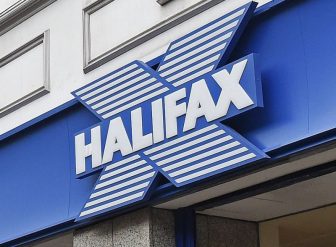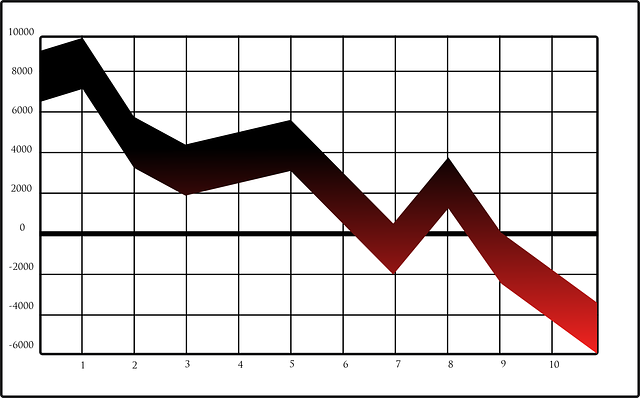 Residential property prices fell by an average of 0.5% in March, compared with 0.2% growth in February, the latest Halifax House Price Index reveals.
Residential property prices fell by an average of 0.5% in March, compared with 0.2% growth in February, the latest Halifax House Price Index reveals.
The average property price now is £296,699, compared to £298,274 in previous month.
But despite the month-on-month dip, the annual rate of growth remains at 2.8%, unchanged from February, led by gains in Northern Ireland.
Northern Ireland continues to record the strongest annual property price growth of any nation or region, rising by 6.6% in March, house prices here average £206,620.
Scotland recorded the second strongest house price growth, increasing to +4.3% last month, compared to +3.8% in February. The average house price here is now £213,750.
Property prices in Wales were also up +3.7% in March, to an average £227,332.
In England, Yorkshire and Humberside also saw strong growth, up +4.2% compared to the previous year, with properties now costing an average £215,807.
London saw the slowest annual house price growth, from +1.5% in February to +1.1% in March. The capital retains the top spot for the highest average house price in the UK, at £543,370.
Amanda Bryden, head of mortgages, Halifax, said: “UK house prices fell by -0.5% in March, a drop of £1,575. Despite this, the annual growth rate remained steady at 2.8%, with the typical UK property now valued at £296,699.
“House prices rose in January as buyers rushed to beat the March stamp duty deadline. However, with those deals now completing, demand is returning to normal and new applications slowing. Our customers completed more house sales in March than in January and February combined, including the busiest single day on record. Following this burst of activity, house prices, which remain near
record highs, unsurprisingly fell back last month.
“Looking ahead, potential buyers still face challenges from the new normal of higher borrowing costs, a limited supply of available properties to choose from, and an uncertain economic outlook.
“However, with further base rate cuts anticipated alongside positive wage growth, mortgage affordability should continue to improve gradually, and therefore we still expect a modest rise in house prices this year.”
Industry reactions:
Iain McKenzie, CEO of The Guild of Property Professionals, commented: “It’s encouraging to see the market finding a more stable footing. While the headline ‘stabilisation’ might sound muted, beneath the surface, the market fundamentals remain remarkably resilient. The transaction levels we saw in the first quarter demonstrate persistent buyer appetite, particularly as stamp duty deadlines spurred activity.
“Crucially, demand hasn’t evaporated; it’s shifting, with renewed interest in larger family homes driving steady underlying price growth in that segment, even as overall headline growth moderates. Yes, the economic backdrop with sticky inflation and revised growth forecasts requires vigilance, and the surge in supply creates a competitive landscape.
“However, this increased choice is actually healthy, preventing overheating and providing opportunities. Mortgage approvals holding strong year-on-year signals continued intent. We anticipate sales volumes adjusting towards their long-term average in 2025, suggesting a sustainable market rather than a boom or bust scenario. Stability, coupled with robust activity, is precisely the environment where experienced agents can guide buyers and sellers effectively.”
Gareth Samples, CEO of The Property Franchise Group, said: “The stabilisation of house prices reflects a maturing market, where increased supply and steady demand are creating a more balanced environment for buyers and sellers alike.
“With competition at its highest level in a decade and more homes available than in recent years, buyers have greater negotiating power, leading to price sensitivity. However, the sustained level of transactions and mortgage approvals signals continued confidence in the housing market. As interest rates remain stable and economic conditions evolve, we anticipate a measured yet positive trajectory for the market throughout 2025.”
David Johnson, managing director of INHOUS, said: “In March, the property market has seen a high level of buyer activity which was partially boosted by American house hunters looking to relocate to the UK. This uplift in buyer demand is contributing to a competitive spring market which sees the majority of sellers achieving their asking price if valued accurately. We advise buyers to start their search as early as possible and be prepared for tough price negotiations.”
Nathan Emerson, CEO of Propertymark, remarked: “This house price reduction will be a huge disappointment to many sellers hoping to make gains on a house sale to climb up the housing ladder, but it could also be an opportunity for aspiring homeowners to take advantage of the slight reduction in house prices and take their first step, or next step, onto the housing ladder.
“Hopefully this month on month dip is only temporary. The spring and summer months normally spur on a flurry in housing activity, especially at a time when there are many competitive mortgage deals out there right now as a result of the reduction in interest rates last year.
“However, with housing playing a vital role in the UK economy, international events could jeopardise the Bank of England’s target of a 2% inflation rate, which may thwart their ambitions to reduce interest rates further. The housing market must remain stable ahead of the Bank of England’s next decision on interest rates in May.”
Tom Bill, head of UK residential research at Knight Frank, noted: “As buyers adapt to higher rates of stamp duty, the positive news is that US trade tariffs announced last week have put downwards pressure on borrowing costs as markets price in an economic slowdown. The Bank of England is now expected to cut rates three times this year rather than twice. The risk is that tariffs ultimately prove to be inflationary and the spillover effects mean upwards pressure on mortgage costs in the UK. For now, the spring market feels steady although the prospect of a tax-raising autumn Budget will throw more uncertainty into the mix later this year.”
Jean Jameson, chief sales office for Foxtons, commented: “The property market momentum seen throughout 2024 has continued over the first quarter of this year, with the recent reductions to interest rates and the resulting improvements to mortgage affordability proving to be the greatest motivator for homebuyers entering the market in 2025.
“As the year progresses we expect to see house prices continue to strengthen, buoyed by the prospect of further interest rate reductions.”
Verona Frankish, CEO of Yopa, said: “Despite a marginal month on month reduction, the long-term view of the UK property market shows that house prices continue to sit higher than they did this time last year and even versus the previous quarter.
“The nation’s homebuyers have responded favourably as mortgage rates have fallen from the peak seen in August 2023 and whilst they may remain considerably higher than they’ve become accustomed to, market confidence and property values have grown in line with the expectation that the cost of borrowing is only set to trend downwards over the coming year.”
Marc von Grundherr, director of Benham and Reeves, added: “The property market remains fighting fit despite the wider economic turbulence faced on numerous fronts, not least from Trump and his tariff war, and whilst we may see the odd monthly adjustment, the real proof in the pudding is a robust level of annual growth.
“So whilst homeowners could find that the cost of some imported US items might rise should the UK government take a tit for tat approach towards Trump, it could result in a swifter reduction in mortgage rates if inflation remain stubbornly persistent and the Bank of England moves to curb it with a hastened schedule of interest rate cuts.”



